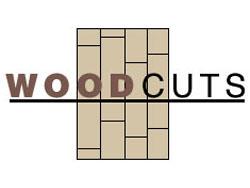Wood Cuts - Jan/Feb 2007
By Rick Berg
One of the reasons wood flooring has become so popular in recent years is that customers love its natural warmth and beauty, as well as its distinctive qualities. The fact is, millions of square feet of wood flooring are installed every year, and not one single board is exactly like any other. Copyright 2007 Floor Focus Inc
That natural uniqueness is one of wood’s strongest selling points, but it also represents a challenge for you as a salesperson.
Managing your customer’s expectations really is about two things. One, remind them that they’re choosing wood because of its natural characteristics, and that means the wood will react differently under different conditions. Two, help them choose a floor that’s going to maximize performance under the conditions likely to occur in their home or business.
Say you have a customer who wants wood flooring installed over an in-floor heating system. In-floor heating is becoming very popular these days, and for good reason: There’s nothing quite like the warmth underfoot on a cold January morning, and the heat radiates evenly throughout the home. Wood is an excellent choice above in-floor heat, because it helps transmit the heat very well and very evenly.
One of wood’s natural characteristics is to expand and shrink somewhat as it gains or loses moisture. In humid summertime conditions, the wood is going to take on moisture and expand to some extent. During the heating season, when the air tends to be drier, it’s going to lose some moisture and shrink. And because of the nature of an in-floor heating system, with the heat source so close to the flooring surface, there’s going to be a greater tendency for the wood to lose moisture and shrink accordingly. Most of the time this isn’t going to be a problem, since the slight gaps that open up between boards may not be noticeable to most people, and they’ll close up over time. However, you can minimize the chance of that happening by specifying a dimensionally stable floor—one that’s less susceptible to expansion and shrinkage.
You have several choices. You can sell the customer on an engineered wood floor. Because the layers of wood in an engineered product are at an angle to one another, the product tends to be very dimensionally stable, compared to many solid wood floors. Or, within the solid wood category, some woods are more dimensionally stable than others. For example, quarter sawn wood is generally much more dimensionally stable than plain sawn. Some species are also more stable than others. American cherry and Santos mahogany, for example, are approximately 33% more dimensionally stable than oak.
The customer still needs to understand that a certain amount of shrinkage is normal during heating season, but if you’ve helped the customer choose the right product, the effect will be minimized.
Color change is another area where educating the customer is critical. Some species are prone to change color over time, and that’s a good thing if the customer knows what to expect. American cherry is a classic example. Normally a light reddish brown immediately after installation, cherry will gradually deepen in color to an even richer hue as time goes on. Your customers will appreciate knowing that. More importantly, they need to know that it’s essential not to place area rugs on the floor for three to four months after installation, so that the color change will be uniform throughout the floor.
The same is true for species like Brazilian cherry, which will deepen to a golden reddish brown, and Santos mahogany, which will appear salmon colored after installation, but take on a reddish orange hue over time.
In fact, most species will change color somewhat, so cautioning against placing area rugs on the floor too soon is always a good idea, and one your customer will thank you for.
It’s also good to remind your customer that wood is going to show variations from one board to another, and that those variations in color and grain pattern are likely to be greater in some types of flooring than others. First grade or select wood flooring will have fewer variations than a second grade or cabin grade product. Some consumers may actually prefer more color and grain variations.
An expert wood flooring salesperson knows that the key is to understand customers’ hopes and expectations, and make sure those expectations match up with the floor they buy. When that happens, customers will be happy with the result, and they’ll respect your knowledge and expertise.
Related Topics:The International Surface Event (TISE)
